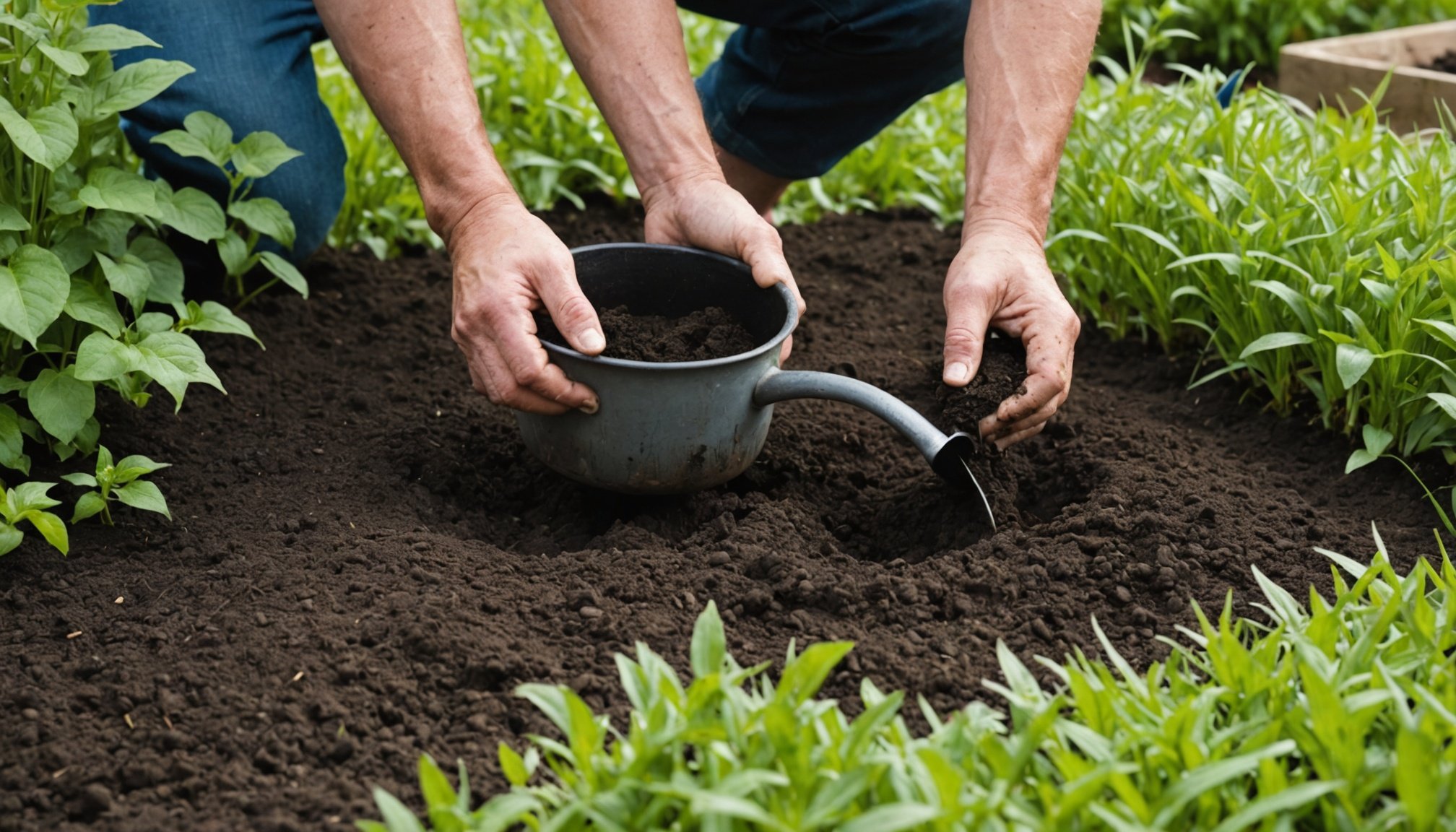Importance of Enhancing Drainage in Clay Soil
Clay soil drainage plays a crucial role in maintaining a healthy and thriving garden. The fine particles in clay soil make it compact and less permeable, leading to poor drainage. This can cause water to pool around plant roots, leading to root rot and other growth issues. Improving drainage through effective soil amendments helps prevent these problems, promoting robust plant growth.
One of the primary benefits of enhancing soil permeability is the improved health of both ornamental and vegetable gardens. Well-drained soil encourages deeper root systems, allowing plants to access nutrients and water more efficiently. This boosts their ability to withstand the diverse climate challenges found in the Northern UK, where heavy rainfall and limited sunlight can exacerbate poor drainage.
Dans le meme genre : Essential Legal Guidelines for Building a Pond in Your UK Garden: What You Need to Know
Incorporating organic matter such as compost or well-rotted manure can significantly improve clay soil drainage. These amendments increase the soil’s organic content, loosening compact clay and enhancing garden permeability. Sand or grit can also be added to improve soil structure, further aiding water movement.
Understanding and implementing these practices enables gardeners to adapt their strategies according to seasonal changes, ensuring a garden that is not only resilient but also flourishing under varying conditions. Enhancing drainage is key to overcoming the natural limitations of clay soil.
Lire également : Top Plant Selections for Creating an Enchanting Victorian Garden in Central London
Top Soil Amendments for Clay Soil
Amending clay soil can significantly improve its structure and fertility, turning it into a vibrant growing medium. A variety of soil improvement techniques can be utilized to achieve this transformation, each with unique benefits.
Organic Matter
Organic matter is a cornerstone for enhancing clay soil. Adding compost or well-rotted manure introduces nutrients and improves soil aeration and drainage. These organic materials break down over time, forming humus, which binds soil particles into a crumbly texture, vital for good plant growth. Humus also retains moisture and nutrients, supplying them to plants gradually.
Gypsum
Gypsum is another effective amendment, particularly for its ability to flocculate clay particles. It promotes the formation of larger aggregates by binding smaller particles, creating pores that allow for better water movement and air infiltration. Gypsum also increases the calcium availability, which aids in root development and nutrient uptake.
Sand
Integrating sand with clay soil demands careful selection and application. Coarse sand is preferred as it helps open up the dense structure of clay, facilitating improved drainage. However, it’s crucial to apply sand at appropriate rates. Overloading with sand can create a concrete-like density, so a balanced mixture is essential for achieving the desired amendment effects.
Application Techniques for Soil Amendments
Adopting the right soil amendment application techniques can significantly transform clay soil into a flourishing garden. Best practices for gardens emphasize the importance of timing and technique to maximize soil fertility and structure improvement.
For incorporating amendments into clay soil, double digging is recommended. This method involves removing the top layer of soil and loosening the layer beneath, before mixing in a combination of organic materials like compost or well-rotted manure. This not only improves drainage but also enhances nutrient accessibility for plants.
Timing is crucial, especially in the Northern UK where seasons dictate planting schedules. Autumn is often ideal for soil amendment as it allows organic materials to break down over winter, preparing the soil for spring planting. Meanwhile, spring is perfect for lighter amendments when weather conditions soften soil compactness, facilitating easier mixing.
Effective mixing and layering of soil amendments ensure even distribution, preventing nutrient hotspots or barren patches. Utilize a garden fork or tiller for thorough blending, maintaining a balance in the amended soil profile. Additionally, layering certain materials, like straw or mulch on clay surfaces after amendment incorporation, can further improve moisture retention and protect against erosion.
By following these application techniques, gardeners can significantly improve the quality and workability of clay soils, enhancing the potential for vibrant garden growth.
Climate Considerations for Northern UK Gardens
The Northern UK gardening experience is significantly shaped by its unique climate, which directly impacts clay soil drainage. Colder temperatures and frequent rain can make clay soils heavy and waterlogged. This can challenge both novice and seasoned gardeners alike. Understanding and addressing these conditions is essential in Northern UK gardening.
Unique Climate Factors
In Northern UK, the climate impacts soil in various ways. Due to higher precipitation, clay soils often struggle with drainage, leading to water retention and root rot in plants. Adapting gardening practices to mitigate these effects is crucial for successful gardening.
Recommended Plants
To thrive in improved clay soils, consider cultivating plants like geraniums, daylilies, and hostas. These resilient species can handle the moisture-rich conditions, turning the climate challenge into an opportunity. Adding organic matter to soil can also enhance drainage and fertility.
Seasonal Maintenance Practices
Regular soil aeration is crucial. Using tools like garden forks to puncture the clay can help water disperse more effectively. Additionally, incorporating a seasonal mulch layer aids drainage by preventing surface compaction. Embracing these local gardening tips ensures optimal conditions for your plants, even in the complex climate of the Northern UK.
Soil Testing and Maintenance Practices
Understanding the condition of your soil is crucial before selecting any amendments. Soil testing methods provide precise information on nutrient levels, pH balance, and organic matter content. These methods ensure you choose amendments that appropriately address specific needs, designed to revitalise the soil and improve its structure.
Over time, effective soil health monitoring becomes indispensable. Regular checks help to detect changes in soil composition, identifying any degradation or nutrient imbalance. Techniques such as visual assessments, biological tests, and chemical analysis offer comprehensive insights. These soil testing methods enable adjustments to be made in a timely manner, ensuring the sustainability of soil health.
Ongoing maintenance is key to sustaining any drainage improvements made to the soil. Maintenance practices may include crop rotation, cover cropping, and periodic soil testing. Adopting these strategies ensures that alterations to the soil’s composition do not negatively impact drainage. It’s essential to tailor these methods to the specific challenges faced in your soil environment.
In conclusion, committing to soil health monitoring through consistent testing and maintenance not only guarantees effective drainage but also preserves the vitality of your garden or farm. These practices safeguard against potential issues, giving you confidence in the long-term productivity of your soil.











